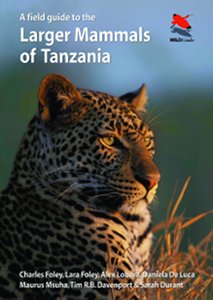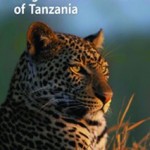
*A Field Guide to the Larger Mammals of Tanzania
Safari goers headed to Tanzania may be interested to know that a new field guide highlighting 135 species of larger mammals (60 percent of mammals identified in Tanzania are rodents, bats and shrews), ranging in size from the hedgehog to the humpback whale, was published. The East Africa country is best known among game viewing and nature enthusiasts for the Serengeti National Park, Ngorongoro Crater, and Mount Kilimanjaro.
Part of the WildGuides, A Field Guide to the Larger Mammals of Tanzania (Princeton University Press, $29.95) by Charles Foley, Lara Foley, Alex Lobora, Daniela De Luca, Maurus Msuha, Tim R. B. Davenport and Sarah Durant is a 320-page paperback book published in 2014. It includes 300 color illustrations and 140 maps. The book is the second in the Wildlife Conservation Society (WCS)-Tanzania Programme field guide series. Author royalties from the book are to be donated to the Wildlife Conservation Society to support the Tanzania Carnivore Project or other wildlife projects in the country.
Forty percent of Tanzania’s larger mammals are strictly or mostly nocturnal, requiring night drives or walks for optimum viewing. The authors recommend red colored filters during those hours.
For land animals there is information on identification, subspecies, similar species, ecology, behavior, distribution, conservation status, and where best to see each type of creature. The conservation status categories are: Critically Endangered, Endangered, Vulnerable, Near Threatened, and Least Concern. There are also plates with side-by-side photographic comparisons of species that are easily confused, and first-time-ever species checklists for the national parks.
Charles Foley is assistant country director for the Wildlife Conservation Society in Tanzania. Lara Foley is program manager of the Wildlife Conservation Society’s Tarangire Elephant Project. Alex Lobora is senior research officer at the Tanzania Wildlife Research Institute. Daniela De Luca is senior scientist for the Wildlife Conservation Society’s conservation programs in the Southern Highlands of Tanzania and Zanzibar. Maurus Msuha is head of wildlife information and education at the Tanzania Wildlife Research Institute. Tim R. B. Davenport is country director for the Wildlife Conservation Society in Tanzania. Sarah Durant is senior research fellow at the Zoological Society of London’s Institute of Zoology.
*Photo: Princeton University Press










